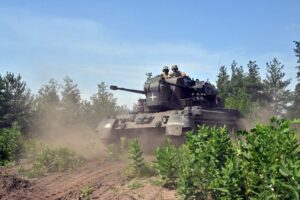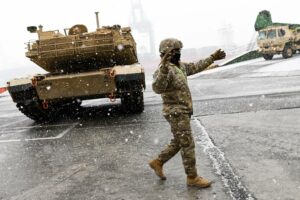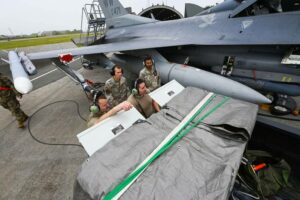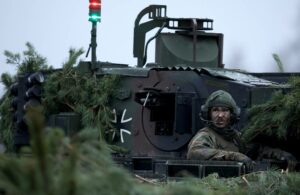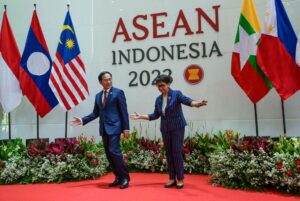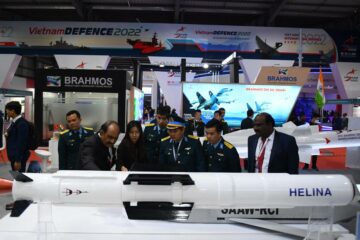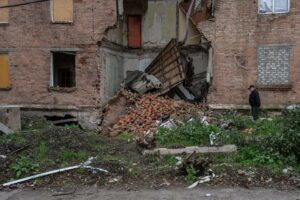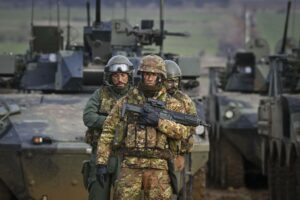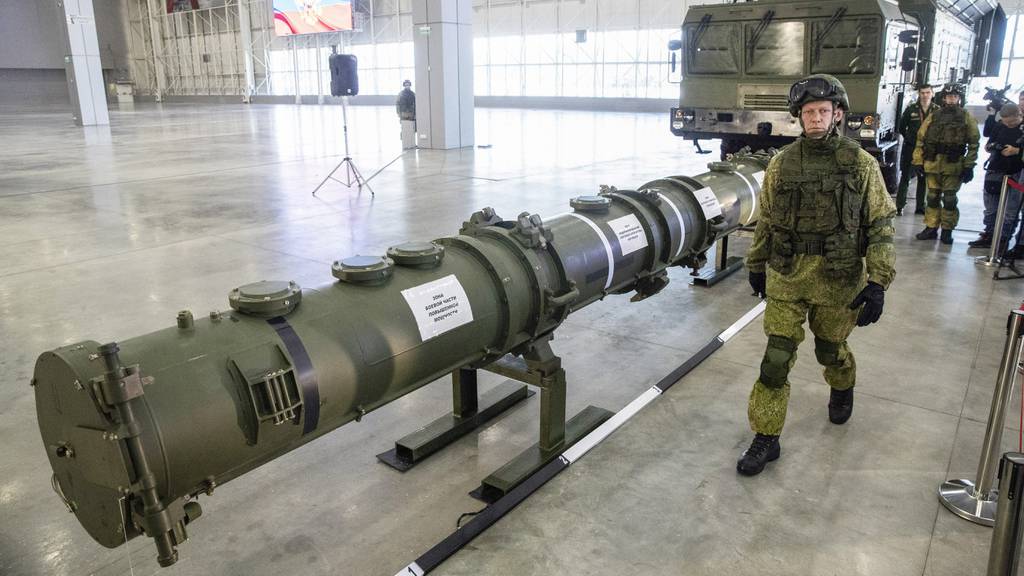
Nuclear threats have been a regular feature of Russian President Vladimir Putin’s discourse since even before he was president. My first memory of reading his name came with the title of secretary of Russia’s national security council in 1999, reporting to then-President Boris Yeltsin that Russian forces had successfully defeated NATO through the use of theater-range nuclear weapon strikes on Poland and Hungary. At that time, Russia’s nuclear-capable, theater-range (nonstrategic) nuclear weapons were less accurate, stealthy and numerous than they are today.
Since 1999, Russia has invested tremendous amounts of money in maintaining legacy systems as well as developing and fielding new types, totaling more than 30 types of nonstrategic nuclear weapon delivery systems, ranging from cruise and ballistic missiles, torpedoes, air-dropped bombs, and anti-aircraft and anti-ballistic missiles. Clearly, Russia values nonstrategic nuclear weapons, or NSNW, particularly those that serve a dual duty — delivering conventional or nuclear warheads.
President Vladimir Putin has asserted that Russia’s nuclear weapons are a guarantor of its sovereignty and its status as a great power. The roles of NSNWs in Russian strategy include deterring unwanted conflicts, coercing adversaries, shaping the battlefield for planned conflicts, controlling escalation within conflicts to protect the Russian homeland, preventing outside powers (read: the U.S.) from intervening in its conflicts, and ensuring that it prevails in war.
NSNWs provide Russia with a comparative and asymmetric advantage over its immediate neighbors as well as the U.S. and its allies, especially considering that the NATO alliance relies entirely on U.S. air-dropped B61-12 bombs for theater nuclear strikes. Russia, on the other hand, employs and continues to develop NSNWs of varying types and ranges to provide a nuclear option at every rung in the escalation ladder.
Recent developments reinforce these observations about Russian thought and doctrine regarding NSNWs. In its war on Ukraine, Russia has used direct nuclear signaling to the U.S. and NATO with its strategic and theater nuclear forces. More recently, it has shown with Belarus that it sees NSNWs as a useful tool to exert further control over its near abroad and increase its coercive power against NATO. China is watching carefully and drawing lessons that it may apply in a potential war against Taiwan — a fact well known to the countries across that region.
A particularly concerning development, from the perspective of the West, is Russia’s belief in its ability to gain and maintain escalation dominance. Russia also has demonstrated during its war on Ukraine that it can absorb personnel and materiel losses in conventional combat to a degree unimaginable to the West, calling into question the very concept of unacceptable costs through mutually assured destruction. This tolerance for casualties and indifference to mutually assured destruction may also be shared by China, which demonstrated a similar indifference to casualties in the Korean War.
The more that can be understood of Russian doctrine and military thought related to NSNWs, the more likely it is that deterrence with Russia can be maintained. Understanding Russia and maintaining deterrence vis-à-vis Russia are matters of survival for the West. If Russia believes that it can control escalation in a potential conflict with the West, and can use nuclear weapons to force the U.S. to back down and concede defeat, it may one day seek to initiate conflict and defeat NATO.
While the performance of Russian conventional forces and depletion of its armies may stay its hand for a while, Russia surely will rearm with its enormous stores of oil and gas money built up over the past few years. Yet many in the West have not grappled with the realities of Russia’s NSNW arsenal, nor developed means to counter Russia’s likely stratagems, systems and doctrine.
I am not advocating for the West to mirror Russia’s nuclear posture by any means, but a deeper and broader study of Russia’s NSNW thought and doctrine is essential to maintaining the peace in Europe.
Within Russia itself, a wide-ranging debate continues in political and military journals on the best way to prevail in a conflict with the West, examining the role of China and other powers such as Iran and North Korea in a potential wider conflict. In the West, the debates on a “two-peer” problem — maintaining deterrence against Russia and China simultaneously — are only now getting underway.
With North Korea and Pakistan increasing their own stocks of NSNWs, and thinking about how they could be used in conflict, Western thought is following on behind the rest. Russian thinking on nuclear weapons, and NSNWs in particular, appears consistent with certain strands of Soviet thinking, but with significant discontinuities due to improvements in the accuracy and lethality of a variety of short-, medium- and long-range artillery and missiles.
Examining this scholarship systematically, through three eras — the Cold War, post-Cold War to Crimea, and Crimea to today — can provide critical insights. More work is needed, and time is short.
William Alberque is the director of strategy, technology and arms control at the International Institute for Strategic Studies.
- SEO Powered Content & PR Distribution. Get Amplified Today.
- PlatoData.Network Vertical Generative Ai. Empower Yourself. Access Here.
- PlatoAiStream. Web3 Intelligence. Knowledge Amplified. Access Here.
- PlatoESG. Carbon, CleanTech, Energy, Environment, Solar, Waste Management. Access Here.
- PlatoHealth. Biotech and Clinical Trials Intelligence. Access Here.
- Source: https://www.defensenews.com/opinion/2024/01/24/an-unprepared-west-contemplates-threat-of-russias-nonstrategic-nukes/
- :has
- :is
- :not
- $UP
- 1999
- 30
- 70
- a
- ability
- About
- accuracy
- accurate
- across
- ADvantage
- advocating
- against
- Alliance
- also
- am
- amounts
- an
- and
- any
- appears
- Apply
- ARE
- arms
- Arsenal
- AS
- assured
- At
- back
- Battlefield
- BE
- been
- before
- behind
- belief
- believes
- BEST
- boris
- broader
- built
- but
- by
- calling
- came
- CAN
- carefully
- certain
- China
- clearly
- cold
- combat
- concept
- concerning
- conflict
- conflicts
- considering
- consistent
- continues
- control
- controlling
- conventional
- Costs
- could
- Council
- Counter
- countries
- critical
- cruise
- day
- debate
- debates
- deeper
- Degree
- delivering
- delivery
- demonstrated
- develop
- developed
- developing
- Development
- developments
- direct
- Director
- discourse
- Dominance
- down
- drawing
- dual
- due
- during
- employs
- enormous
- ensuring
- entirely
- escalation
- especially
- essential
- Europe
- Even
- Every
- Examining
- fact
- Feature
- few
- First
- following
- For
- Force
- Forces
- from
- further
- Gain
- GAS
- getting
- great
- great power
- had
- hand
- Have
- he
- his
- homeland
- How
- HTTPS
- Hungary
- if
- images
- immediate
- improvements
- in
- include
- Increase
- increasing
- initiate
- insights
- Institute
- International
- intervening
- into
- invested
- Iran
- IT
- ITS
- itself
- jpg
- known
- korea
- Korean
- ladder
- Legacy
- less
- Lessons
- likely
- losses
- maintain
- maintaining
- many
- Matters
- May..
- means
- Memory
- Military
- mirror
- missiles
- money
- more
- mutually
- my
- name
- National
- national security
- needed
- neighbors
- New
- nor
- North
- North Korea
- now
- nuclear
- Nuclear weapons
- numerous
- observations
- of
- Oil
- Oil and Gas
- on
- ONE
- only
- Option
- or
- Other
- outside
- over
- own
- Pakistan
- particular
- particularly
- past
- peace
- performance
- Personnel
- perspective
- planned
- plato
- Plato Data Intelligence
- PlatoData
- Poland
- political
- potential
- power
- powers
- president
- preventing
- Problem
- protect
- provide
- Putin
- question
- ranges
- ranging
- Read
- Reading
- realities
- recently
- regarding
- region
- regular
- reinforce
- related
- Reporting
- REST
- Role
- roles
- Russia
- russian
- Russian president
- s
- secretary
- security
- Seek
- sees
- serve
- shaping
- shared
- Short
- shown
- significant
- similar
- simultaneously
- since
- sovereignty
- soviet
- Status
- stay
- stealthy
- Stocks
- stores
- Strands
- Strategic
- Strategy
- Strikes
- studies
- Study
- Successfully
- such
- surely
- survival
- Systems
- Technology
- than
- that
- The
- The West
- Theater
- their
- These
- they
- Thinking
- this
- those
- thought
- threat
- threats
- three
- Through
- time
- Title
- to
- today
- tolerance
- tool
- totaling
- tremendous
- types
- u.s.
- Ukraine
- understanding
- understood
- Underway
- unimaginable
- unwanted
- use
- used
- useful
- Values
- variety
- varying
- very
- Vladimir Putin
- war
- was
- watching
- Way..
- Weapons
- WELL
- were
- West
- Western
- which
- while
- wider
- will
- with
- within
- Work
- years
- yet
- zephyrnet



